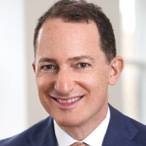
Refractive cataract surgery is having its moment. After more than a year of lockdowns and other restrictions, the newest subspecialty in ophthalmology is once again gaining momentum. Procedural volume has rebounded thanks to strong demand from accepting patients, and innovative devices and implants are propelling the field forward. These triumphs herald an era when, technologically, wearing glasses and contact lenses may become optional.
Twenty years ago, Bryn Mawr Communications launched CRST with the goal of covering the latest in both cataract surgery and the emerging field of laser vision correction. In the inaugural issue of CRST (September 2001), John F. Doane, MD, reviewed the refractive landscape and rightly crowned LASIK “king of the refractive jungle.”1 In the same issue, Sheri Rowen, MD, described her use of the first FDA-approved toric IOL (STAAR Surgical) on a patient with high astigmatism and keratoconus using applanation ultrasound biometry, which at that time was the gold standard,2 and Stephen G. Slade, MD, FACS, hinted at a promising, investigational, presbyopia-correcting IOL, the Crystalens (Bausch + Lomb).3
These articles from CRST’s first edition foreshadow what was to come for cataract and refractive surgery. The Crystalens was approved a few years later, and in May 2005, CMS Ruling 05-01 helped usher in the cataract surgery premium channel, which subsequently unleashed industry investment and innovation.
Ever since then, the merging of cataract and refractive surgery has continued unabated. Important milestones include improved IOL formulas, refined optical biometry devices, a growing understanding of posterior corneal astigmatism, enhanced femtosecond laser precision, the availability of intraoperative aberrometers and digital toric IOL alignment systems, advances in IOL design, and even new classes of premium IOLs. In 2021, the number of refractive cataract surgery procedures (including laser cataract surgery and the implantation of premium IOLs) will likely surpass the number of laser vision correction procedures performed in the United States, making refractive cataract surgery the new king of the refractive jungle.
Is refractive cataract surgery really a new subspecialty? Yes and no. Any cataract surgeon can use the latest refractive technologies. The bar for success, however, is rising along with patient expectations. Consistently achieving spectacle freedom with a multifocal toric IOL in 2021 requires more than a perfectly executed surgical procedure. Surgeons also must be able to perform a refractive corneal enhancement, toric IOL rotation, or IOL exchange—and to know when to do which.
In the past few years, the number of refractive cataract fellowships has risen to fill the knowledge gaps, and many ophthalmology societies are providing robust education to surgeons who are ready to make the financial and time commitments required to build a refractive cataract surgery practice. Thanks to an increasing number of these surgeons, refractive cataract surgery is flourishing in many settings: comprehensive ophthalmology practices, formerly LASIK-only practices, glaucoma practices, OD referral practices, academic institutions, and even value-based care practices. Nevertheless, the consolidation of refractive cataract surgery to fewer experienced high-volume surgeons is accelerating. In the coming years, fewer surgeons will be doing more cases.
Where will the pressures of declining reimbursement and rising demand take ophthalmology? In 2021, the Medicare reimbursement for cataract surgery, including up to three postoperative office visits, is similar to that for two regular office visits (with testing) and telling patients that their cataracts aren’t ready yet.
That said, we have it good here in the United States. There is a 1.5-year wait for cataract surgery in the Health Service setting in Ireland. In some countries, patients who choose a multifocal IOL are required to opt out of their insurance benefits and pay for the entire procedure, including surgeon, facility, and anesthesia fees, out of pocket.
Patient acceptance and happiness with current presbyopia-correcting IOLs has never been greater. As IOL technology begins to surpass the abilities of the natural 50-year-old crystalline lens, the next refractive frontier becomes refractive lens exchange. This segment is growing significantly in my practice owing to greater awareness of this new LASIK after 50 procedure among referring doctors and patients. As a sidenote, a better name than refractive lens exchange is needed. (In that vein, the term PRK doesn’t roll off the tongue like LASIK or SMILE.)
It is an exciting time to be an anterior segment surgeon, and I feel certain that refractive lens-based surgery and corneal laser vision correction will be the king and queen of the refractive jungle for years to come.
1. Doane JF. The future of LASIK. Cataract & Refractive Surgery Today. September 2001. Accessed August 5, 2021. https://crstoday.com/articles/2001-sep/1_0901_05-html/?single=true
2. Rowen S. Cataract challenge. Cataract & Refractive Surgery Today. September 2001. Accessed August 5, 2021. https://crstoday.com/articles/2001-sep/1_0901_03-html/?single=true
3. Slade SG. 5 questions with Stephen G. Slade, MD. Cataract & Refractive Surgery Today. September 2001. Accessed August 5, 2021. https://crstoday.com/articles/2001-sep/1_0901_17-html/?single=true




